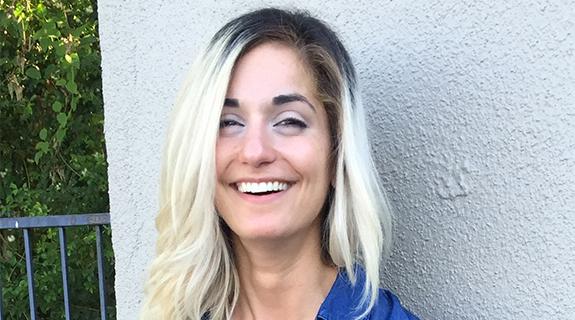Throughout my time as a student — from elementary school through college and beyond — it was never enough to just read a piece of text. Reading often required analysis, commentary, understanding the greater significance that transcended the actual words on a page. What does X mean when someone says Y? And how does that relate to Z?
It wasn’t until I got out of school and entered the working world when I realized how much (or how little) we think about the larger significance of what words actually mean on a day-to-day basis. As a marketer and media maker in the TV world, it’s of even greater value for me to think critically about media—a TV show or piece of content—outside of the experience of actually watching.
I’ve always loved storytelling, so after I graduated college and moved back home to LA, I got my first job as a script reader and assistant in film development. The prospect of being so invested in a project for a very long time only for it to never reach fruition really frustrated me. How fast TV was growing at the time and the number of quality shows on the air made me realize perhaps television was more my pace. I knew the quickest way to make the transition was through PromaxBDA’s and Santa Monica College’s Promo Pathway program, because there I would be carefully taught a craft that other people just fell into, and I would get face time with people who could very well be my hiring managers in the future.
However, I never thought telling a shorter story to sell a longer story would be such a fulfilling task. Creating a promo is an execution of creativity in its purest form: How do you tell a story and attract an audience (solve a problem) in a finite space (under limitations)? Now, nearly two years out of the program with experience in both the creative and strategic side of marketing, I understand that being media literate is the fundamental element in approaching marketing endeavors. Being cognizant of the audience—their habits, their intentions, their attention span—is crucial to creating effective media.
When I first joined Promo Pathway in 2014, it was during a time of intense change in the industry. Changing consumption habits and cord cutters posed imminent doom. In terms of monetization, no one knew how TV was going to be “saved.” Not even a year ago, the industry was treating this pressing issue as if there existed a singular solution that someone had yet to crack… and get rich from doing so.
But now, just keeping up with the trades demonstrates how adaptable our industry is. Instead of focusing solely on solving the issue with linear television, we’ve embraced changing consumption habits and this technological evolution by creating more and more platforms for audience engagement and advertiser integrations. Now that we’re in it, it’s no longer a crisis. What was once a crisis is now an opportunity.
Learning how to create content that sells content in Promo Pathway taught me to keep a critical eye on the media landscape and to consider the implications on the how, when, where, what, and why questions around how audiences are best engaged. Learning from industry veterans how a marketing campaign was initially conceived through to its ultimate execution – it became very clear that all these factors are taken into consideration when creating promotional content.
That being said, it’s a very interesting time for media literacy education. Never before did we have to think of a story or piece of content with regard to the platform on which it will being distributed. The “where” and the “how” we tell stories is evolving at a rapid pace.
Coming from Pivot, a network built on the foundation of creating and distributing content that inspires and compels social change, the current proliferation of socially relevant content is perhaps the best example of why media literacy is important. For example, when we built out our marketing campaign for our series Truth and Power, the challenge was reaching audiences that were already invested in the topics presented in the series (surveillance, profiteering, and corruption in the digital age).
We knew we had to reach niche audiences, and these audiences were inaccessible through traditional television cluster buying. So we approached each episode like its own documentary launch, and leveraged a meticulously selected editorial partners to extend our reach in the digital sphere. We also aligned each episode with cultural moments in politics, government, and technology to integrate each episode into existing conversations about government surveillance, large-scale corruption, and civil protest. Truth and Power was then framed as a resource where readers interested in these topics could learn more.
On top of everything, I learned being media literate enables us not only to understand content’s social relevance but also helps us understand how evolving technology is strengthening the art of persuasion, allowing us to experience that content to an even more impactful degree.
Nazy Farkhondeh is a marketing coordinator at Participant Media and a graduate of the PromaxBDA Promo Pathway program
Tags:













































__twocolumncontent.jpg)











